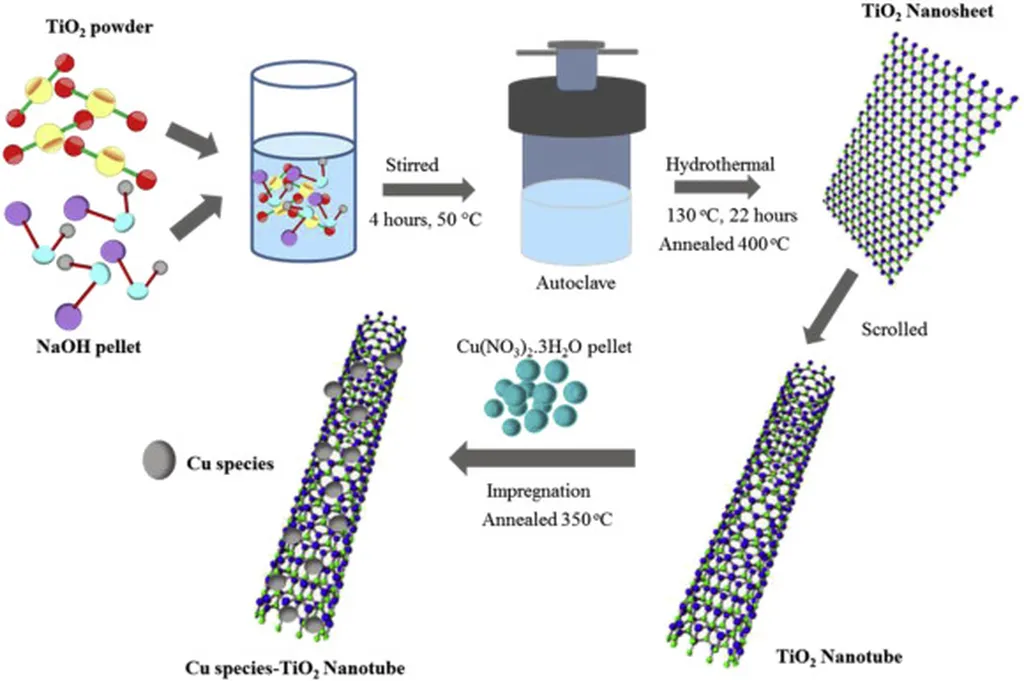In the pursuit of enhancing optoelectronic devices, researchers have made significant strides in understanding the electrical properties of copper(I) oxide/titanium dioxide (Cu2O/TiO2) heterojunctions. A recent study, led by K A Jagadish from the Department of Physics at the Manipal Institute of Technology, Manipal Academy of Higher Education, India, delves into the frequency-dependent electrical behavior of these heterojunctions, offering insights that could revolutionize the energy sector.
The research, published in the journal Materials Research Express (translated as “Expressions of Materials Research”), focuses on the interfacial dynamics and the impact of post-deposition annealing on the electrical properties of Cu2O/TiO2 heterojunctions. These heterojunctions are created using reactive DC magnetron sputtering, a technique that allows for precise control over the deposition process.
One of the key findings of the study is the variation in built-in potentials and carrier concentrations influenced by annealing temperature. “The built-in potentials ranged from 0.45 V to 1.92 V, with carrier concentrations between 1.43 × 10^16 and 9.93 × 10^16 cm^−3,” explains Jagadish. This variability is crucial for tuning the electrical properties of the heterojunctions to suit specific applications.
The study also reveals that the dielectric constant (ε’) decreases with increasing frequency, from approximately 85 to about 10 as the frequency rises from 1 kHz to 1 MHz. This behavior is attributed to reduced dipolar and space-charge polarization. The imaginary part of the dielectric constant (ε”) further confirms strong interfacial polarization at low frequencies, highlighting the importance of interfacial dynamics in these heterojunctions.
AC conductivity was found to increase with frequency, supporting a thermally activated hopping conduction mechanism. This finding is significant for understanding the charge transport mechanisms in these materials, which is essential for optimizing their performance in optoelectronic devices.
Impedance spectroscopy, modeled with an R(CR)(QR)(CR) circuit, exhibited multiple relaxation behaviors. The incorporation of a constant phase element (CPE) accounted for non-ideal dielectric effects caused by surface inhomogeneity. Rapid thermal annealing resulted in a decrease in series resistance, from 844 Ω at room temperature to 802 Ω at 150 °C, indicating enhanced charge transport.
The study concludes that annealing at 150 °C produced optimal outcomes, reducing interface losses and enhancing charge transport. These findings underscore the tunability and potential of Cu2O/TiO2 heterostructures for optoelectronic applications such as photodetectors and solar cells.
The implications of this research are far-reaching for the energy sector. By understanding and controlling the electrical properties of Cu2O/TiO2 heterojunctions, researchers can develop more efficient and cost-effective optoelectronic devices. This could lead to significant advancements in solar energy conversion, photodetection, and other applications that rely on the conversion of light into electrical energy.
As the world continues to seek sustainable and renewable energy sources, the insights gained from this study could play a pivotal role in shaping the future of the energy sector. The work of Jagadish and his team not only advances our scientific understanding but also paves the way for practical applications that could have a profound impact on our daily lives.

